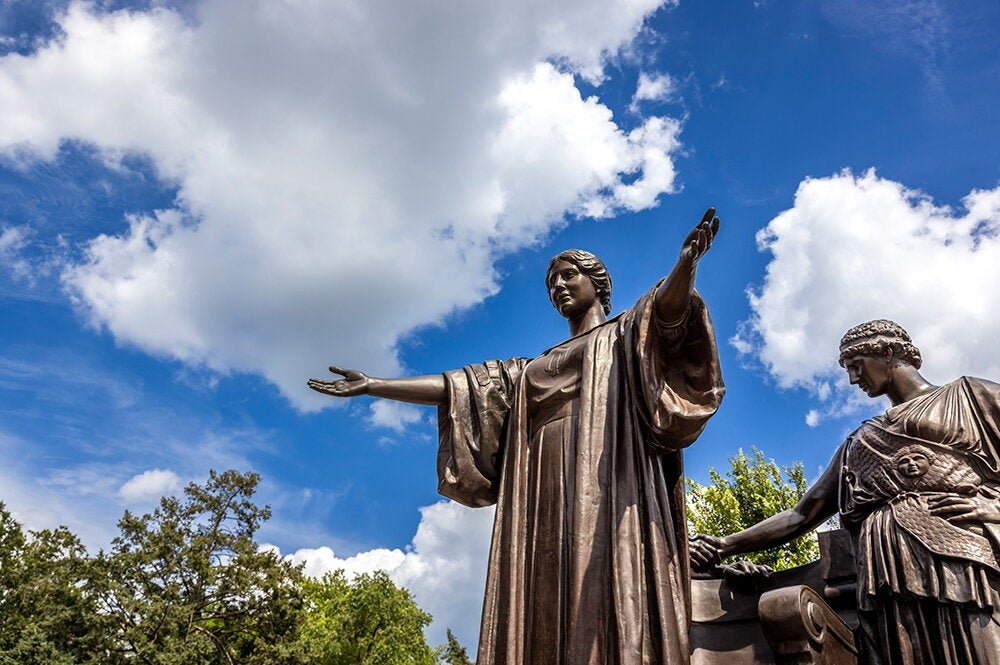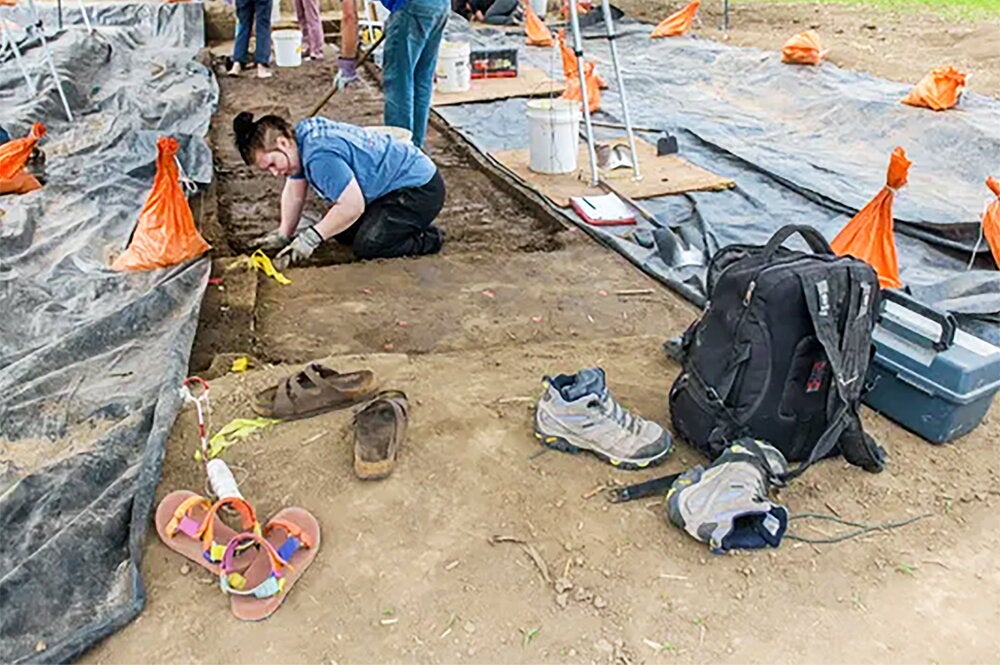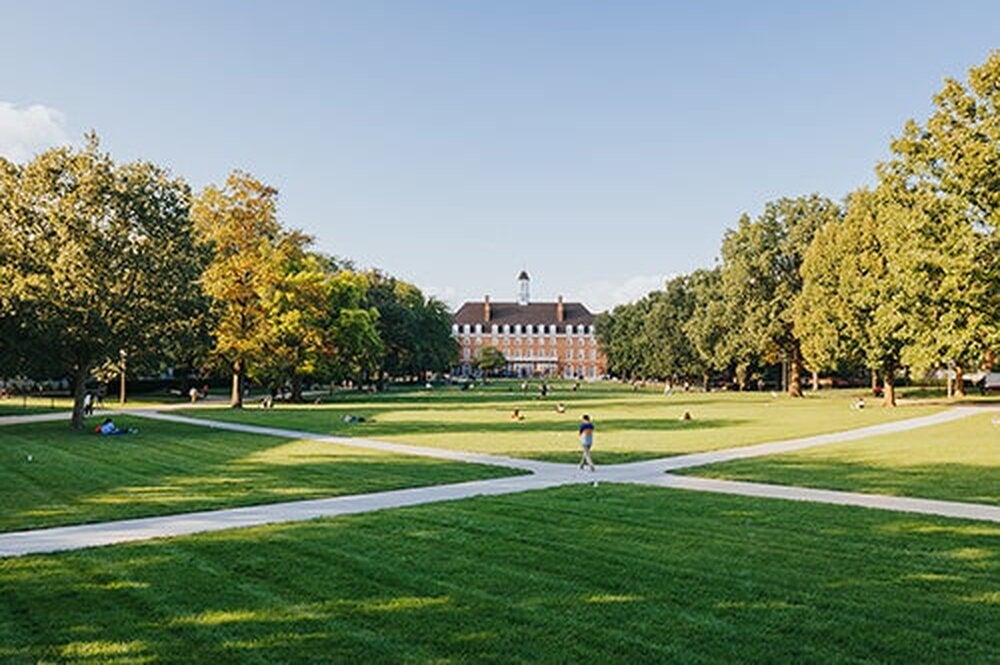

(Photo by Fred Zwicky.)
Illinois Governor J.B. Pritzker recently announced new funding to support communities working to preserve and celebrate their unique cultural heritage. The “State Designated Cultural District” initiative will provide $3 million to selected cultural districts to aid such efforts. U of I anthropology professor Helaine Silverman, whose work focuses on the ways that nations and communities create and deploy cultural heritage as a means of building identity and attracting tourism, spoke to News Bureau life sciences editor Diana Yates about the new program and its implications for the state.
Hasn’t Illinois already lost much of its ecological and cultural heritage as a result of population changes and agriculture?
Certainly, the early expanding settlement of European-derived populations resulted in a huge loss of ancient sites due to agriculture and urbanization. The Indian Removal Act of 1830 and the Black Hawk War of 1832 also caused significant Native American population losses.
Replacing Illinois’ diverse tall grass prairie with vast industrial corn and soybean fields homogenized the landscape, and the engineering of the Mississippi River dramatically altered the aboriginal riverine environment.
But the Upper Mississippi Conservation Area near Alton and the Emiquon National Wildlife Refuge near Lewistown are rich in wildlife and habitat diversity. The Illinois State Archaeological Survey and various avocational groups are dedicated to the recovery of existing archaeological sites. The state has high racial and ethnic diversity – and these groups create new cultural heritage.
You have worked to preserve and draw attention to the history of Illinois communities along the Mississippi River. What is special about these regions?
Three areas along the Mississippi River stand out for their contributions to Illinois – and American – history. Southwest Illinois had a significant French Colonial history, which is still visible between Chester and Cahokia. The riverbend region around Alton is where Elijah Lovejoy was martyred in defense of abolition and freedom of the press. University of Illinois Springfield history professor Devin Hunter and I co-direct the Mythic Mississippi Project, which produced a film about Lovejoy, and also our film about the Underground Railroad, which had a notable presence in the riverbend region.
And the westernmost “bump” of Illinois – between Quincy and Nauvoo – witnessed important acts of religious settlement, tolerance and intolerance that still reverberate today.
What can be done to preserve the cultural identity of sites in Illinois along the Mississippi?
Overwhelmingly, it is older residents who have a sense of place and knowledge and appreciation of the history of their towns and who express a cultural identity related to it. If a town has the will and the means to know and preserve its past and make it relevant and productive in the present, and if local history is part of a school curriculum, there is hope that young people, too, will develop a locally grounded cultural identity. I call this “entrepreneurial heritage” and see it as effective in fomenting tourism. Tourism can be a powerful driver of site preservation and a stimulus for positive constructions of cultural identity.
What other sites or regions are deserving of attention in Illinois and why?
I am passionately interested in coal towns south of Springfield. Illinois was a huge producer of coal. It was at the epicenter of some of the country’s most important labor struggles and greatest mining disasters. Many downstate towns were once thriving communities but were left bereft by the loss of the coal industry.
The Mythic Mississippi Project has linked several former coal communities in thematic tourism routes that promote visits to local coal museums and mining memorials and thus to the towns themselves. I also am keen on “Forgottonia,” a 1960s nickname for west central Illinois because of a lack of state investment in the region. The MMP promotes that area as the “Western Illinois Pioneer Trail.” The region has a fascinating history, including sites associated with the War of 1812, Mormon migration, the Underground Railroad, and a once-vibrant cigar industry. It also includes the recently designated New Philadelphia National Historic Site and the monumental Lock and Dam #19.
In your opinion, which of these are the most endangered? The most deserving?
The issue of endangered towns has multiple dimensions. A town may be endangered by insufficient employment or by an exodus of ambitious young people for lack of local opportunity. It also may be endangered by the loss of streetscapes that once gave a town its character and place identity. Related to this is the collapse of Main Street, which has produced vacant storefronts and demoralized the social fabric of communities.
Pragmatically, the “most deserving” sites are towns with interesting, visible histories that already are taking the initiative to help themselves, that have not overly deteriorated, and where some outside enthusiasm and a bit of investment can boost local efforts to yield tangible deliverables.
How can the new funding help?
The primary goal of Governor Pritzker’s cultural districts is economic redevelopment and tourism. The two are interrelated forces and state funding can be transformative.
Cuba, in west central Illinois, has retained its town square. Funding would enable the repair of historic buildings and remediation of modern ones, perhaps by means of wall murals. This could generate an interesting historical narrative, strengthen local business and encourage new businesses to open.
Pana, a coal town, already has taken the first step by creating a wonderful public park with significant historical references that link to a small history museum on the same block. Investment in Pana would enable the museum to undergo a professional refurbishment and help the town acquire an unused commercial building between the park and museum, which it wants to repurpose as a cultural center.
Chester, on the Mississippi River, is the southern gateway to the French region. It played a major role in the Underground Railroad and it has a documented Mark Twain connection. Chester has two historically interesting neighborhoods, but the town is so elongated that the two are discontinuous. Funding would allow Chester to create signage for its historic attractions and facilitate the purchase of an open-air bus that could run between the neighborhoods and thus encourage tourism and business.


